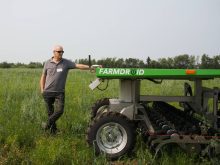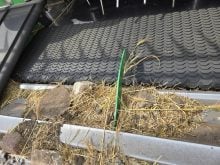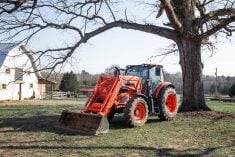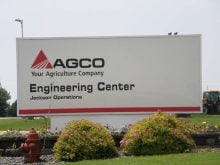It’s the “A” in the Optimum GAT acronym that makes Pioneer Hi-Bred’s
newly approved herbicide tolerant corn and soybeans better than its
rivals, says a senior official with the company.
GAT stands for glyphosate and ALS tolerance. Existing herbicide
tolerant systems are tolerant to glyphosate, which is a Group 9
herbicide. Optimum GAT contains additional tolerance to Group 2
acetolactase synthase herbicides, which include the imidazolinones and
sulfonylureas families of chemicals.
Read Also

Research looks to control flea beetles with RNAi
A Vancouver agri-tech company wants to give canola growers another weapon in the never-ending battle against flea beetles.
“That makes it really different from the other products that are out
there today,” said Tracy Linbo, Pioneer’s senior marketing manager for
the Optimum GAT trait.
Growers will be able to use the potent contact weed killing control
of glyphosate herbicides and/or the contact and residual weed killing
control of the ALS herbicides. The ALS herbicides give farmers more
flexibility on when they apply chemical and provide longer weed control.
Pioneer’s parent company, DuPont, is expected to release new
herbicides to be used on the new varieties that it says will provide
corn and soybean growers with “noticeably cleaner” fields through
harvest.
Andrew Saramaga, chair of the Manitoba Pulse Growers Association’s soybean committee, said the competition is welcome.
“In Manitoba, Roundup Ready soybeans have definitely been well
received and I have a feeling that this will also be well received.”
He said the province’s soybean growers will likely be interested in
the ability to use Group 2 herbicides because they sometimes struggle
with Roundup Ready canola volunteer weeds.
The new genetically modified corn and soybean crops received
Canadian regulatory approval Sept. 1. U.S. regulators approved the
Optimum GAT trait for soybeans on July 17, 2008, but are still
assessing Optimum GAT corn. Linbo expects the approval to be in place
by year end.
Pioneer is planning on a 2011 commercial release for its GM soybeans in the U.S. market and a 2012 release for its GM corn.
“Canada should be right about the same time,” said Linbo, although
she won’t know for another six months what the time lines will be north
of the border.
The company had originally hoped for a 2010 release for Optimum GAT
corn but delays in U.S. regulatory approval are pushing back approvals
in key export markets like Japan, Taiwan and Korea.
Linbo expects the improved weed control offered by Optimum GAT will
increase Canadian corn and soybean acreage. She is especially excited
about the potential for more soybean plantings in Western Canada.
Pioneer’s new GM soybean contains its patented Optimum GAT technology in addition to Monsanto’s Roundup Ready trait.
“When we put them together in soybeans, what we have discovered is
it’s actually better combined than either of the two themselves,” said
Linbo.
The two companies are embroiled in a lawsuit over the inclusion of
the Roundup Ready gene. That gene was not used in Optimum GAT corn.
DuPont estimates Optimum GAT soybeans will deliver less than $100
million US worth of value to the company, while Optimum GAT corn will
be worth in excess of $400 million. Linbo said that is due to the
larger corn customer base and the fact that the company is charging
farmers more for its GM corn because it includes tolerance to Herculex
insecticide.
Pioneer also plans to incorporate its new glyphosate resistance into
its canola lines. That product will be called Optimum GLY canola.
The new GM canola will not include the ALS tolerance gene because
ALS herbicides are a key tool for controlling volunteer canola.
Work on the canola lines is in the early development stage.
“That one is probably about four to five years away,” said Linbo.
Preliminary tests of the new glyphosate tolerant canola look promising.
“We’re quite excited about it. I wish it was going to be here faster,” said Linbo.

















